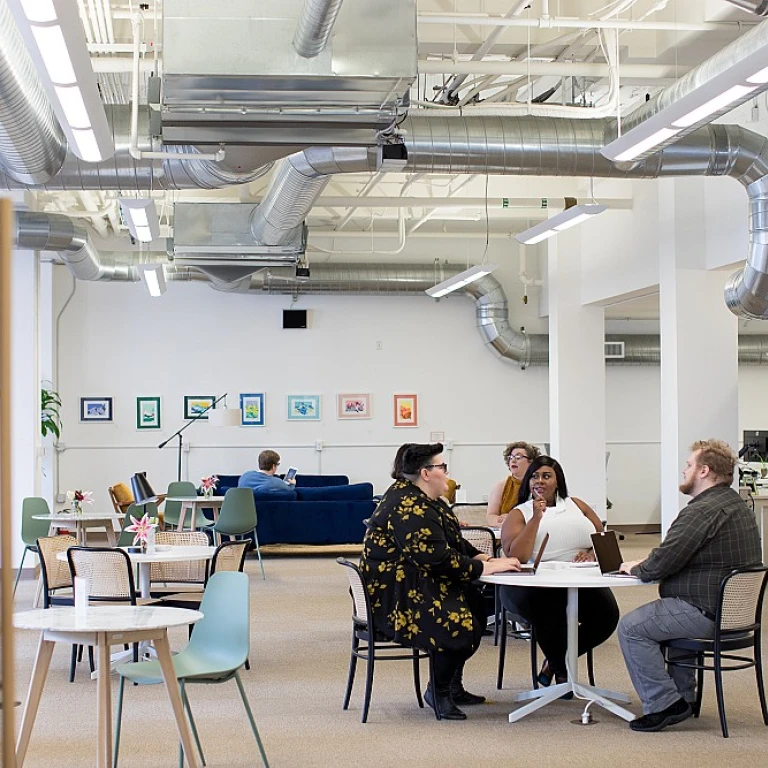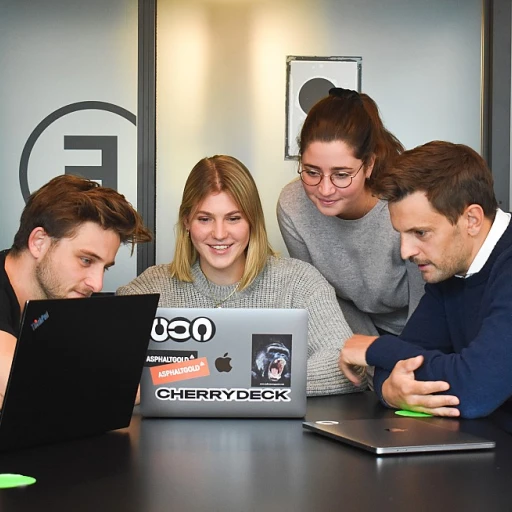
The Role of Technology in HR Innovation
Revolutionizing Human Resources: The Impact of Modern Technologies
The advent of technology has significantly transformed the landscape of human resources. It is reshaping traditional processes and creating new ones, aiming to enhance both efficiency and employee experience. In an age where strategic compensation plays a crucial role, technology optimizes resource management and empowers professionals to focus on growth and development.
Within the human resources domain, modern technology facilitates a myriad of functions:
- Automation of Routine Tasks: By automating repetitive tasks, HR teams can allocate more time and effort to strategic initiatives. This includes using automated tools for payroll, attendance tracking, and other administrative duties. Such automation can help reduce human error and allow employees to concentrate on creative problem-solving endeavors.
- Fostering Employee Engagement: Leveraging technology to foster employee newsletters, companies can share important updates, success stories, and employee newsletters, promoting a culture of transparency and open communication. A well-curated employee newsletter could feature topics like professional development and shed light on pressing questions within the workplace, sent with optimal frequency weekly or monthly to ensure engagement.
- Enhancing Communication: Tools like Slack, Zoom, and Microsoft Teams have revolutionized workplace communication. They provide a platform for team collaboration, keep employees aligned, and maintain a cohesive company culture, even in remote work settings.
- Data-Driven Insights: By utilizing technology to gather and analyze data, HR departments can make informed decisions regarding recruitment, training, and development. The ability to harness data effectively allows companies to adapt to the evolving needs of their employees and improve overall employee engagement.
As organizations integrate these technological advances, they pave the way for innovative HR strategies that not only bolster operational efficiency but also enhance the employee experience significantly. This dynamic interaction between technology and human resources will continue to evolve, promising a future enriched with further opportunities for growth and advancement.
Employee Experience: A New Focus in HR
Fostering a Positive Employee Experience
Within the human resources realm, emphasis on employee experience has sprouted numerous innovative practices. A company's approach to enhancing this experience can significantly influence overall employee engagement and satisfaction. As we observe trends from april march to november october, many organizations are pivoting towards strategies that prioritize the well-being and development of their employees.
Creating a collaborative workplace environment where team members feel valued is often the first step. Implementing regular employee newsletters plays a crucial role in this transformation. A weekly email providing updates, news, and resources can enhance transparency and connectivity within the team. Customized newsletter ideas that share employee stories, professional development opportunities, and other inspiring content can foster a sense of belonging and purpose.
A distinct factor that's emerged in the recent past, spanning from february january to august july, is the demand for opportunities in unique training resources. Employee engagement increases when companies invest in their professional growth. Human resource departments, therefore, are tasked with finding innovative ways to cater to this, whether it's through internal workshops or partnering with external entities.
As the workplace continues to evolve, human resources professionals must also innovate the ways they gather and respond to feedback. Conducting pulse surveys frequently, say weekly or bi-weekly, allows for timely adjustments and demonstrates that employee voices are heard. By addressing questions and concerns in real-time, companies can effectively reduce human crapital loss and enhance loyalty.
Ultimately, enhancing employee experience requires a holistic approach. From utilizing best practices in communication to leveraging technology for feedback and development, companies that focus on genuine engagement will witness deep-rooted positive outcomes. Such actions not only improve the existing work culture but also lay the groundwork for future endeavors.
Data-Driven Decision Making in HR
Data Utilization in HR Practices
The integration of data-driven decision-making in human resources is profoundly reshaping how companies interact with their employees. By analyzing employee engagement levels, HR teams can tailor strategies to foster a more engaging and productive workplace environment. For instance, monitoring employee participation in innovative recognition and rewards programs can highlight areas for improvement while also celebrating successes.
To fully harness data’s potential, HR professionals are increasingly relying on specific metrics:
- Employee Engagement Surveys: Regularly distributed questionnaires provide insights into how employees perceive their work environment. Newsletters and best practices for employee engagement can be shared based on survey outcomes.
- Performance Analytics: Tracking performance metrics aids in identifying both high-performing teams and those needing additional resources or development opportunities.
- Turnover Rates: Understanding why employees leave is crucial. Data patterns here help in establishing retention strategies and improving overall workplace well-being.
Ultimately, the role of data extends beyond mere number crunching. It’s about asking the right questions and shaping HR strategies that nurture talent effectively. As the workplace evolves, leveraging data ensures that HR departments stay at the forefront of innovation, driving both company success and employee satisfaction.
Remote Work and Its Impact on HR Strategies
Remote Work: Transforming HR Dynamics
With the onset of remote work, human resources strategies have witnessed a monumental shift. Companies are re-evaluating their approaches to employee engagement and productivity. As stay-at-home policies became mainstream, HR professionals had to navigate new challenges while continuing to foster a cohesive team environment. The remote work model has reshaped traditional concepts of the workplace, demanding innovative ideas to ensure efficient operations. The reliance on digital communication tools has increased the frequency of virtual meetings and weekly check-ins. Employees and teams have had to adapt to platforms for video calls and virtual collaboration, making it crucial for HR departments to offer best practices and resources to optimize these new workflows. Regular employee newsletters have emerged as vital tools to maintain connection, share company updates, and distribute resources effectively. Bullet points may help clarify a few aspects:- Newsletter Utilization: Weekly newsletters are instrumental in sharing inspiring employee stories, uplifting news, and professional development opportunities. This not only keeps employees informed but also fosters a sense of belonging.
- Employee Engagement: Directly tied to newsletters, maintaining high employee engagement is crucial. Innovative human resources strategies now include more targeted communications and personalized content.
- Digital Integration: Embracing technologies and new digital solutions to support remote work is key. By integrating these into HR strategies, companies can better address the needs of their workforce.
Diversity and Inclusion: Driving Innovation in HR
Promoting Diverse Thought Through Employee Newsletters
The dynamic nature of today's workplace requires human resources professionals to understand the value of diversity and inclusion as core drivers of innovation. Emphasizing these principles fosters a culture where every voice within the team is heard and valued. A simple yet effective method to achieve this is through leveraging employee newsletters.
Employee newsletters can do more than just share company news. They can serve as essential tools to promote engagement and diversity within the workplace. By incorporating diverse stories and perspectives, newsletters can empower employees to share their unique ideas and contributions. Moreover, when newsletters highlight the achievements of individuals from varied backgrounds, they inspire others and reinforce a collaborative team atmosphere.
To maximize the positive impact on employee engagement, HR should consider the following strategies in their newsletters:
- Frequency: Maintaining a frequency weekly publication schedule for newsletters ensures that employees are continually informed and engaged with the ongoing developments within the company.
- Inclusive content: Regular inclusion of stories that span different cultures, experiences, and viewpoints can encourage a broader understanding and appreciation of diversity within the team.
- Interactive elements: Introduce sections where employees can ask questions or share insights, enhancing the richness of the dialogue fostered by the newsletter.
- Professional development focus: Highlighting resources for professional growth and tutorials can be a monthly feature, assisting employees in their career advancement.
An employee newsletter is more than just an information source; it’s a pivotal engagement tool that, when used to its full potential, can significantly uphold the values of diversity and inclusion within any organization. As such, it becomes a catalyst for innovative thinking and ultimately contributes to a more vibrant company culture.
Future Trends in HR Innovation
Innovative Approaches to Shaping the Future of Human Resources
The future of human resources is vast and ever-evolving. As the landscape shifts, professionals are expected to adopt and implement inventive strategies that align with both company goals and employee expectations. A key aspect of this transformation is recognizing trends that promise to redefine traditional HR paradigms and drive progressive change.
Remote work continues to play a crucial role in reshaping the workplace. The shift demands HR teams to rethink their strategies to maintain employee engagement and collaboration. The rise in remote work has sparked a renewed emphasis on creating a balanced integration between work and life—a notion that significantly impacts overall employee satisfaction and productivity.
Another trend gaining momentum is a heightened focus on diversity and inclusion. Such initiatives not only drive innovation but also strengthen the workplace by fostering an environment where various perspectives are celebrated. Companies are increasingly prioritizing inclusivity to ensure that every team member feels valued and respected. This approach contributes to a more dynamic and resilient work environment, which can be highlighted in employee engagements and newsletters.
Newsletter communication is a powerful tool in this paradigm, as it presents opportunities to share valuable resources, insights, and news updates across the company. By maintaining a frequency weekly and adopting best practices for content and engagement, HR professionals can use newsletters to strengthen connections within the team and sustain a cohesive company culture.
With access to real-time data and analytics, the decision-making process within HR has become more informed and precise. Organizations can now leverage data-driven insights to shape their strategies, enhancing not only the human resource facets but also addressing broader business objectives.
As we move forward, human resources should remain agile and adaptable, embracing new technologies and ideas that support the evolving needs of employees and the workplace. October September's trends may require constant learning and adjustment, but they ultimately promise a more innovative and effective HR landscape.












